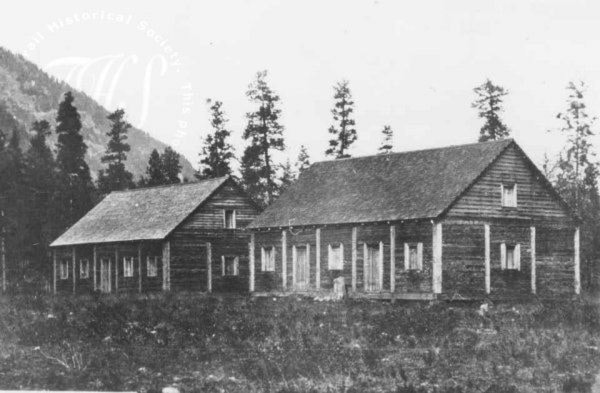Fifty-ninth in a series on West Kootenay/Boundary place names
There’s Fort Shepherd and there’s Fort Sheppard: nearby but separate places with different spellings.
The latter was an obscure townsite on the east side of the Columbia River, at its confluence with the Pend d’Oreille, while the former was a Hudson’s Bay Company trading post on the west side of the Columbia, just north of the Canada-US border and six kilometers southwest of present-day Trail.
Angus MacDonald established the post between 1856 and 1859 as a replacement on British soil for the company’s Fort Colvile, in what’s now Washington state.
It was originally known as Fort Pend d’Oreille before being renamed for Hudson’s Bay Company governor John Shepherd (1792-1859). Several sources suggest the name change followed his death, but it appears to have been earlier, for in a letter dated July 20, 1857, British colonial governor James Douglas wrote: “Chief trader Blenkinsop will be stationed at the new establishment, which we have named after the governor, Fort Shepherd.”
The first newspaper reference to the fort isn’t until the Victoria British Colonist of October 10, 1859. In any case, it was the first permanent European settlement in what is now West Kootenay.
Here the company built a store, warehouses, employee barracks, and a headquarters for its factor, all out of logs. It was a stopping place on the Dewdney Trail, close to a Sinixt village, and witnessed the short-lived Pend d’Oreille gold rush. A Colonial post office opened on July 13, 1865.
But Fort Shepherd never lived up to the company’s expectations for lack of arable land. It closed in 1870 and burned two years later, although one of its chimneys stood for at least another 40 years.
After several false starts, the Trail Kinsmen Club finally erected a cairn with a bronze plaque to mark its site in 1951. The plaque went missing a few years ago. The land itself is now part a conservancy area with signs pointing to it from the east side of the Columbia.
Fort Shepherd continued to be used as a byword for the region into the late 1880s. Its first misspelling as Fort Sheppard was in a legal ad in the Nelson Miner of December 27, 1890 heralding the impending construction of Daniel Chase Corbin’s Nelson and Fort Sheppard Railway. Once the mistake was made, there was no correcting it — nor, it seems, any admission it was a mistake at all.
But it was true that the line would run between Nelson and the now-forgotten townsite of Fort Sheppard, where our story continues next week.
Previous installments in this series
Applegrove, Appleby, and Appledale revisited
Bakers, Birds, and Bosun Landing
Bannock City, Basin City, and Bear Lake City
Bealby Point (aka Florence Park) revisited
Boswell, Bosworth, Boulder Mill, and Broadwater
Brooklyn, Brouse, and Burnt Flat
Camborne, Cariboo City, and Carrolls Landing
Carmi, Cedar Point, Circle City, and Clark’s Camp
Carson, Carstens, and Cascade City
Christina City and Christian Valley
Cody and Champion Creek revisited
Champion Creek revisited, again
Columbia City, Columbia Gardens, and Columbia Park
Crawford Bay and Comaplix revisited
Dawson, Deadwood, and Deanshaven
